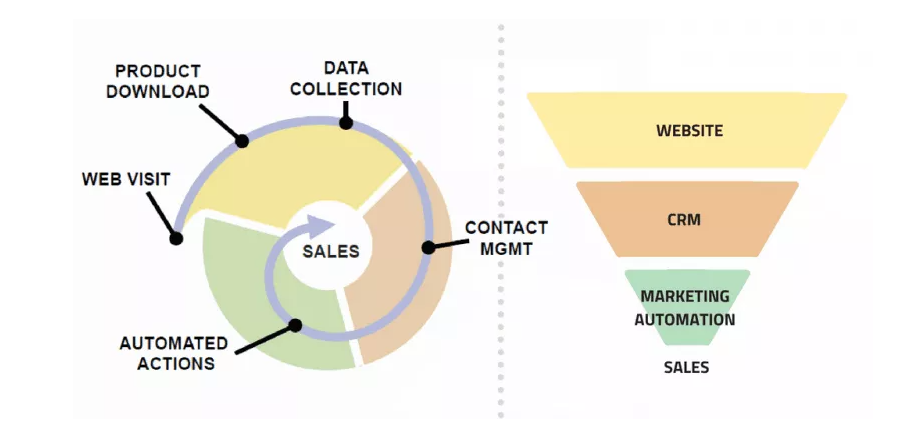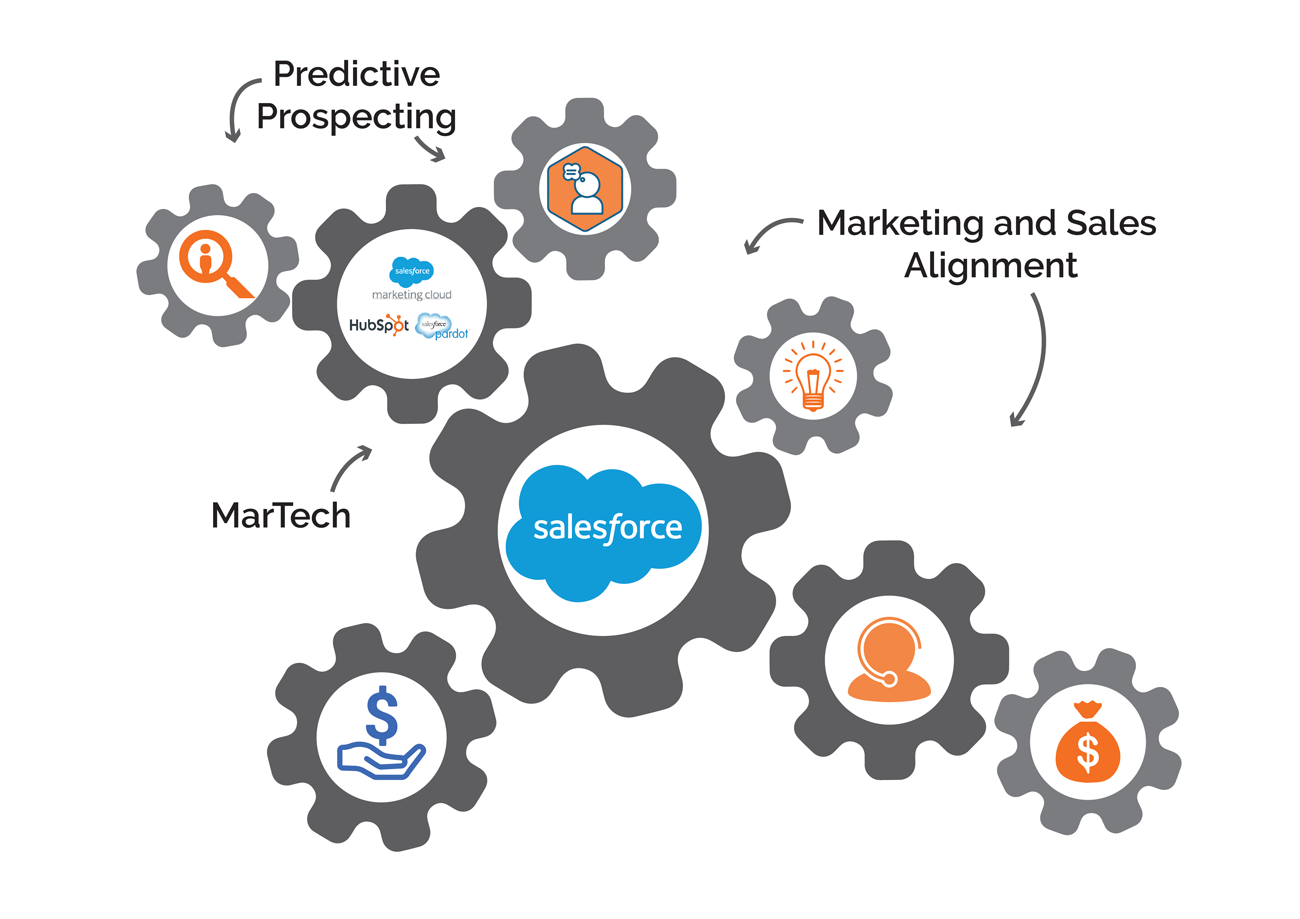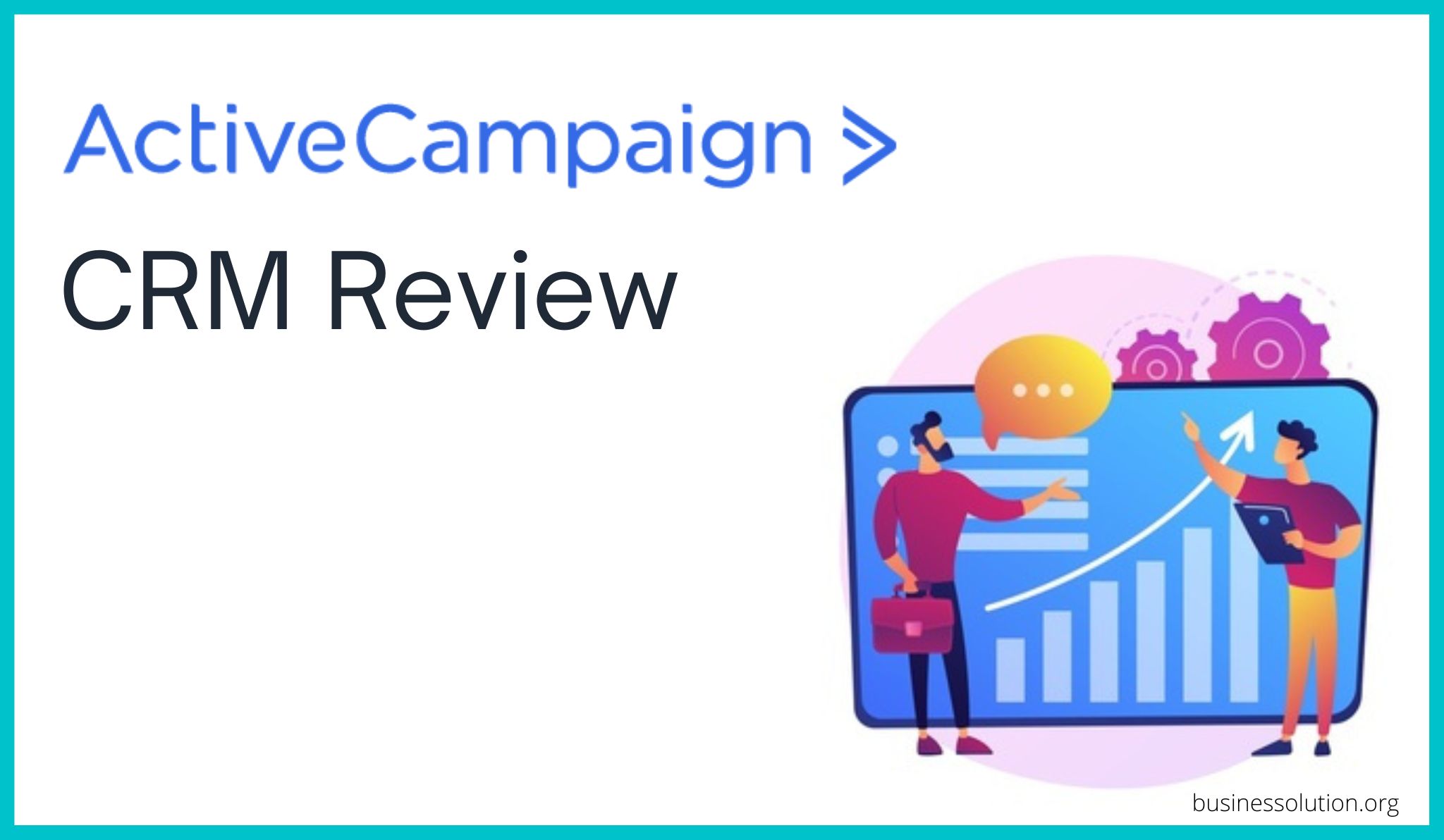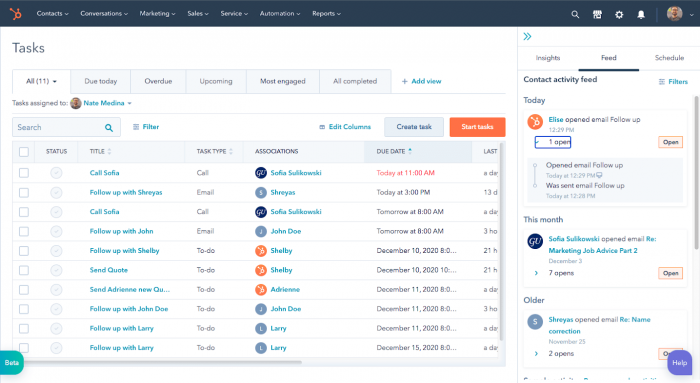Mastering CRM Marketing Workflows: A Comprehensive Guide to Boosting Customer Engagement and ROI
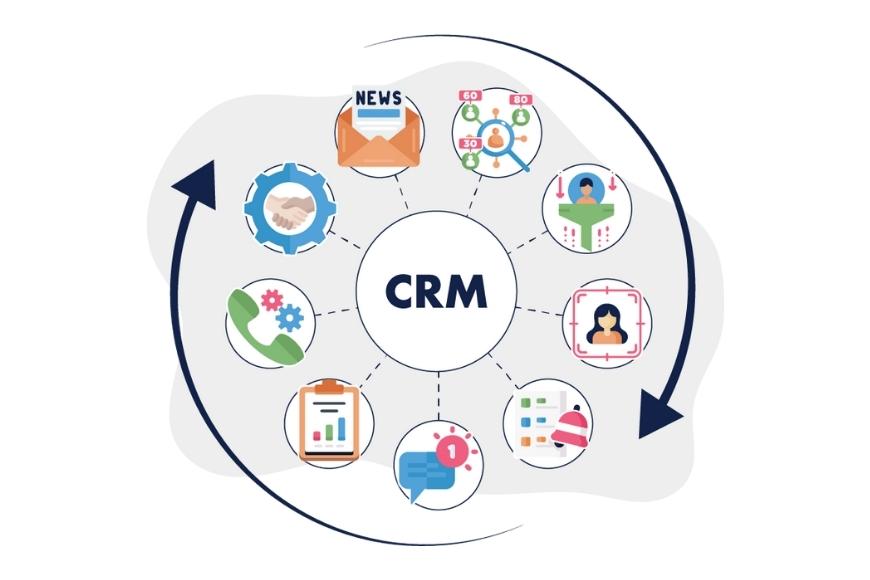
Unveiling the Power of CRM Marketing Workflows
In today’s hyper-competitive business landscape, simply having a Customer Relationship Management (CRM) system isn’t enough. To truly leverage its potential, you need to master CRM marketing workflows. These workflows are the backbone of effective customer engagement, driving conversions, nurturing leads, and ultimately, boosting your return on investment (ROI). Think of them as the automated pathways that guide your customers through their journey with your brand, from the initial touchpoint to becoming loyal advocates.
This comprehensive guide will delve deep into the world of CRM marketing workflows, providing you with the knowledge and tools you need to design, implement, and optimize them for maximum impact. We’ll explore the fundamental concepts, best practices, and real-world examples to help you transform your CRM system into a powerful engine for growth.
What Exactly Are CRM Marketing Workflows?
At its core, a CRM marketing workflow is a series of automated steps triggered by specific customer actions or data points within your CRM system. These workflows are designed to deliver the right message, to the right person, at the right time, without requiring manual intervention. This automation frees up your marketing team to focus on strategic initiatives while ensuring consistent and personalized communication with your customers.
Consider these examples:
- Welcome Emails: When a new customer signs up for your newsletter, an automated workflow sends them a welcome email, introducing your brand and offering a special promotion.
- Abandoned Cart Recovery: If a customer adds items to their online shopping cart but doesn’t complete the purchase, an automated workflow sends a follow-up email reminding them of the items and offering assistance.
- Lead Nurturing: When a lead downloads a valuable piece of content, an automated workflow sends them a series of emails, providing them with relevant information and guiding them closer to a purchase.
These are just a few examples of the many possibilities. The beauty of CRM marketing workflows lies in their flexibility and adaptability. You can tailor them to fit your specific business needs, customer segments, and marketing goals.
The Benefits of Implementing CRM Marketing Workflows
The advantages of implementing CRM marketing workflows are numerous and far-reaching. Here are some of the key benefits:
- Increased Efficiency: Automation streamlines your marketing processes, saving your team valuable time and resources.
- Improved Customer Engagement: Personalized and timely communication fosters stronger relationships with your customers.
- Higher Conversion Rates: Targeted messaging and relevant offers increase the likelihood of conversions.
- Enhanced Lead Nurturing: Automated workflows nurture leads, guiding them through the sales funnel and increasing their chances of becoming customers.
- Data-Driven Insights: Workflows provide valuable data on customer behavior, allowing you to optimize your marketing campaigns and improve your ROI.
- Scalability: Workflows can easily scale with your business, handling increasing volumes of customers and interactions.
- Reduced Manual Errors: Automation minimizes the risk of human error, ensuring consistency and accuracy in your marketing efforts.
In essence, CRM marketing workflows empower you to work smarter, not harder, and achieve better results with your marketing efforts.
Key Components of a Successful CRM Marketing Workflow
Building effective CRM marketing workflows involves several key components. Understanding these components is crucial for creating workflows that deliver results.
1. Triggers
Triggers are the events that initiate a workflow. They can be based on a variety of factors, including:
- Customer Behavior: Website visits, form submissions, purchase history, and email opens/clicks.
- Demographic Data: Age, location, gender, and job title.
- Lead Scoring: Scores assigned to leads based on their engagement and qualifications.
- Date-Based Events: Birthdays, anniversaries, and renewal dates.
Choosing the right triggers is essential for ensuring that your workflows are relevant and timely. Consider your target audience and the specific goals of each workflow when selecting triggers.
2. Actions
Actions are the steps that are executed within a workflow. They can include:
- Sending Emails: Delivering personalized messages to customers.
- Updating CRM Records: Modifying customer data based on their actions.
- Adding/Removing Tags: Segmenting customers based on their behavior.
- Assigning Tasks: Notifying sales representatives of new leads or opportunities.
- Sending SMS Messages: Delivering instant updates and promotions.
The actions you choose will depend on your specific goals and the nature of the workflow. Make sure your actions are aligned with your overall marketing strategy.
3. Conditions
Conditions are rules that determine whether a specific action should be executed. They allow you to personalize your workflows based on customer data and behavior. For example, you might use a condition to send a different email to customers who have already purchased a product versus those who haven’t.
4. Segmentation
Segmentation involves dividing your customer base into groups based on shared characteristics, such as demographics, behavior, or purchase history. Effective segmentation is crucial for creating targeted and personalized workflows. You can use segmentation to tailor your messaging and offers to specific customer segments, increasing the likelihood of engagement and conversions.
5. Testing and Optimization
Once you’ve created a workflow, it’s important to test it thoroughly to ensure it’s working as expected. You should also regularly monitor your workflows and make adjustments based on performance data. This includes A/B testing different email subject lines, content, and calls to action to see what resonates best with your audience.
Designing Effective CRM Marketing Workflows: A Step-by-Step Guide
Creating effective CRM marketing workflows requires a strategic approach. Here’s a step-by-step guide to help you get started:
Step 1: Define Your Goals
Before you start building any workflows, you need to define your goals. What do you want to achieve? Are you trying to increase sales, improve customer retention, or nurture leads? Clearly defined goals will guide your workflow design and help you measure your success.
Step 2: Identify Your Target Audience
Who are you trying to reach with your workflows? Understanding your target audience is crucial for creating relevant and personalized messaging. Consider their demographics, interests, and behaviors.
Step 3: Choose Your Triggers
Based on your goals and target audience, select the appropriate triggers for your workflows. Think about the actions or data points that will initiate the workflow.
Step 4: Map Out Your Workflow
Visualize your workflow by creating a flowchart or diagram. This will help you plan the sequence of actions and conditions. Consider the customer journey and how your workflow will guide them through it.
Step 5: Write Your Content
Craft compelling and personalized content for your emails, SMS messages, and other actions. Use clear and concise language, and include a strong call to action.
Step 6: Set Up Your Actions and Conditions
Configure the actions and conditions within your CRM system. Ensure that your actions are aligned with your goals and that your conditions are based on the appropriate customer data.
Step 7: Test Your Workflow
Thoroughly test your workflow to ensure it’s working as expected. Send test emails, review your customer data, and make sure that all actions are executed correctly.
Step 8: Launch and Monitor
Once you’ve tested your workflow, launch it and start monitoring its performance. Track key metrics such as open rates, click-through rates, conversion rates, and ROI. Use this data to optimize your workflow over time.
Examples of CRM Marketing Workflows to Implement
To give you a head start, here are some examples of CRM marketing workflows that you can implement in your business:
1. Welcome Series
Goal: Introduce new subscribers to your brand and encourage them to engage with your content.
Triggers: New subscriber sign-up.
Actions:
- Send a welcome email with a personalized greeting and a brief introduction to your brand.
- Offer a special promotion or discount to encourage a purchase.
- Share links to your most popular content or products.
- Add the subscriber to a specific customer segment.
2. Lead Nurturing Series
Goal: Nurture leads and guide them through the sales funnel.
Triggers: Lead downloads a valuable piece of content (e.g., ebook, whitepaper).
Actions:
- Send a series of emails providing relevant information and answering common questions.
- Offer a free consultation or demo.
- Score the lead based on their engagement and qualifications.
- Assign the lead to a sales representative if they meet the criteria.
3. Abandoned Cart Recovery Series
Goal: Recover abandoned carts and increase sales.
Triggers: Customer adds items to their cart but doesn’t complete the purchase.
Actions:
- Send a reminder email with a link to the abandoned cart.
- Offer a discount or free shipping to incentivize the purchase.
- Include a customer service contact for assistance.
4. Customer Onboarding Series
Goal: Guide new customers through the onboarding process and ensure they have a positive experience.
Triggers: New customer purchase.
Actions:
- Send a welcome email with instructions on how to use your product or service.
- Offer helpful tips and resources.
- Provide customer support contact information.
- Check in with the customer after a few days to see if they need any assistance.
5. Re-engagement Series
Goal: Re-engage inactive customers and encourage them to make a purchase.
Triggers: Customer hasn’t made a purchase in a certain amount of time.
Actions:
- Send a “We miss you” email with a special offer.
- Share new product updates or promotions.
- Ask for feedback to understand why they haven’t made a purchase recently.
Best Practices for CRM Marketing Workflow Success
To maximize the effectiveness of your CRM marketing workflows, keep these best practices in mind:
- Personalize Your Messaging: Use customer data to personalize your emails, SMS messages, and other communications. Address customers by name, reference their past purchases, and tailor your offers to their interests.
- Segment Your Audience: Divide your customer base into segments based on shared characteristics. This allows you to create more targeted and relevant workflows.
- Keep it Concise and Clear: Your messaging should be clear, concise, and easy to understand. Avoid using jargon or technical terms that your audience may not understand.
- Include a Strong Call to Action: Tell your customers what you want them to do. Make it easy for them to take the desired action, such as visiting your website, making a purchase, or signing up for a newsletter.
- Test and Optimize Regularly: Continuously test and optimize your workflows to improve their performance. A/B test different subject lines, content, and calls to action to see what resonates best with your audience.
- Monitor Your Metrics: Track key metrics such as open rates, click-through rates, conversion rates, and ROI. Use this data to identify areas for improvement.
- Automate as Much as Possible: Automate as many steps as possible to save time and resources. However, be sure to maintain a human touch by including personalized elements and providing customer support.
- Integrate with Other Tools: Integrate your CRM system with other marketing tools, such as email marketing platforms, social media platforms, and analytics tools. This will allow you to create more comprehensive workflows and gain a deeper understanding of your customers.
- Respect Customer Preferences: Always respect customer preferences regarding communication frequency and content. Provide an easy way for customers to unsubscribe from your emails or update their preferences.
- Stay Updated: The marketing landscape is constantly evolving. Stay up-to-date on the latest trends and best practices in CRM marketing to ensure your workflows remain effective.
Choosing the Right CRM System for Your Workflows
The foundation of your CRM marketing workflows is the CRM system itself. Choosing the right system is crucial for success. Consider these factors when selecting a CRM:
- Features: Does the CRM offer the features you need to create and manage your workflows? Look for features such as automation capabilities, segmentation options, and reporting tools.
- Scalability: Can the CRM scale with your business as it grows? Make sure the system can handle increasing volumes of customers and data.
- Integration: Does the CRM integrate with your other marketing tools, such as email marketing platforms and social media platforms?
- Ease of Use: Is the CRM easy to use and navigate? Choose a system that your team can quickly learn and adopt.
- Cost: Consider the cost of the CRM, including any implementation fees, monthly subscriptions, and training costs.
- Support: Does the CRM provider offer adequate support and training?
Popular CRM systems that are well-suited for marketing workflows include:
- HubSpot CRM: Known for its user-friendliness and comprehensive marketing automation features.
- Salesforce Sales Cloud: A robust platform with advanced customization options.
- Zoho CRM: A cost-effective option with a wide range of features.
- ActiveCampaign: Strong in email marketing and automation.
Research and compare different CRM systems to find the one that best meets your specific needs.
Measuring the Success of Your CRM Marketing Workflows
Measuring the success of your CRM marketing workflows is essential for optimizing their performance and demonstrating your ROI. Here are some key metrics to track:
- Open Rates: The percentage of emails that are opened by recipients.
- Click-Through Rates (CTR): The percentage of recipients who click on links in your emails.
- Conversion Rates: The percentage of recipients who complete a desired action, such as making a purchase or filling out a form.
- Return on Investment (ROI): The financial return generated by your workflows.
- Lead Generation: The number of new leads generated by your workflows.
- Customer Lifetime Value (CLTV): The predicted revenue a customer will generate over their relationship with your business.
- Customer Retention Rate: The percentage of customers who remain loyal to your brand.
- Website Traffic: The amount of traffic generated to your website from your workflows.
- Revenue: The total revenue generated by your marketing campaigns.
Use your CRM system’s reporting tools to track these metrics. Analyze the data regularly and make adjustments to your workflows as needed to improve their performance.
Troubleshooting Common CRM Marketing Workflow Problems
Even with careful planning and execution, you may encounter some challenges with your CRM marketing workflows. Here are some common problems and how to address them:
- Low Open Rates: If your open rates are low, try improving your email subject lines, sending emails from a recognizable sender, and ensuring your emails are mobile-friendly.
- Low Click-Through Rates: If your click-through rates are low, make sure your content is relevant, your calls to action are clear and compelling, and your links are working properly.
- Low Conversion Rates: If your conversion rates are low, review your landing pages, ensure your offers are attractive, and make sure your checkout process is user-friendly.
- Workflow Not Triggering: Double-check your triggers to make sure they are set up correctly. Ensure that the conditions are met and that the workflow is active.
- Incorrect Data: Regularly review your customer data to ensure its accuracy. Clean up any inaccurate or outdated information.
- Lack of Personalization: Make sure you’re personalizing your messaging as much as possible. Use customer data to address customers by name, reference their past purchases, and tailor your offers to their interests.
- Too Many Emails: Avoid overwhelming your customers with too many emails. Respect their communication preferences and provide an easy way for them to unsubscribe.
By identifying and addressing these common problems, you can optimize your workflows and improve their performance.
The Future of CRM Marketing Workflows
CRM marketing workflows are constantly evolving, and the future holds exciting possibilities. Here are some trends to watch:
- Artificial Intelligence (AI): AI will play an increasingly important role in CRM marketing workflows, enabling more personalized and automated experiences. AI can be used to predict customer behavior, optimize messaging, and automate tasks.
- Hyper-Personalization: Marketers will continue to focus on hyper-personalization, tailoring their messaging and offers to individual customer preferences and behaviors.
- Omnichannel Marketing: Workflows will increasingly span multiple channels, such as email, SMS, social media, and in-app messaging, providing a seamless customer experience.
- Voice Search Optimization: Marketers will need to optimize their workflows for voice search, ensuring their content is easily accessible through voice assistants.
- Privacy and Data Security: With growing concerns about data privacy, marketers will need to prioritize data security and comply with privacy regulations.
By staying ahead of these trends, you can ensure that your CRM marketing workflows remain effective and competitive.
Conclusion: Embrace the Power of Automated Marketing
CRM marketing workflows are a powerful tool for driving customer engagement, increasing conversions, and boosting your ROI. By understanding the key components, designing effective workflows, and following best practices, you can transform your CRM system into a growth engine for your business.
Remember to define your goals, identify your target audience, and continuously test and optimize your workflows. Embrace the power of automation and personalize your messaging to create meaningful relationships with your customers. With a strategic approach to CRM marketing workflows, you can achieve significant results and take your business to the next level.

